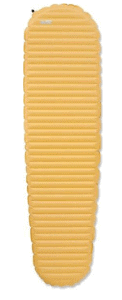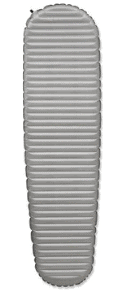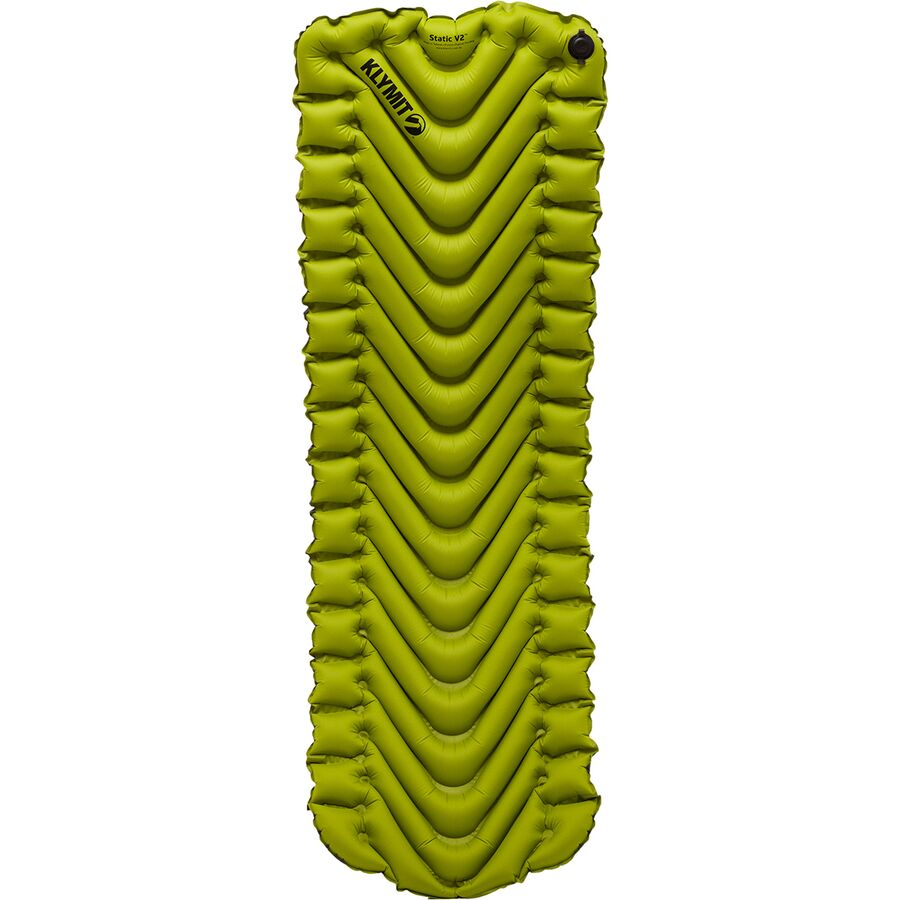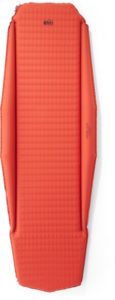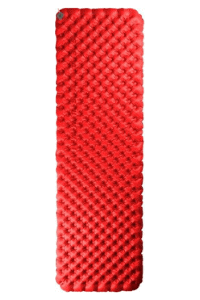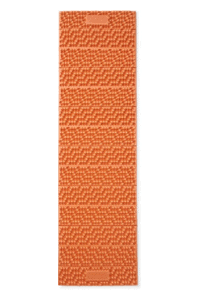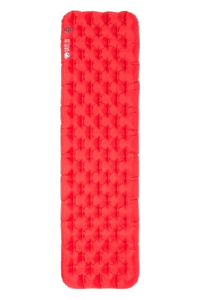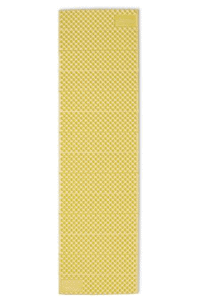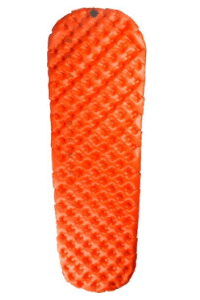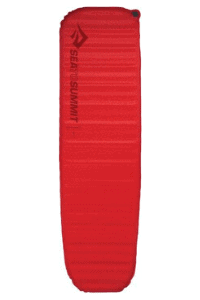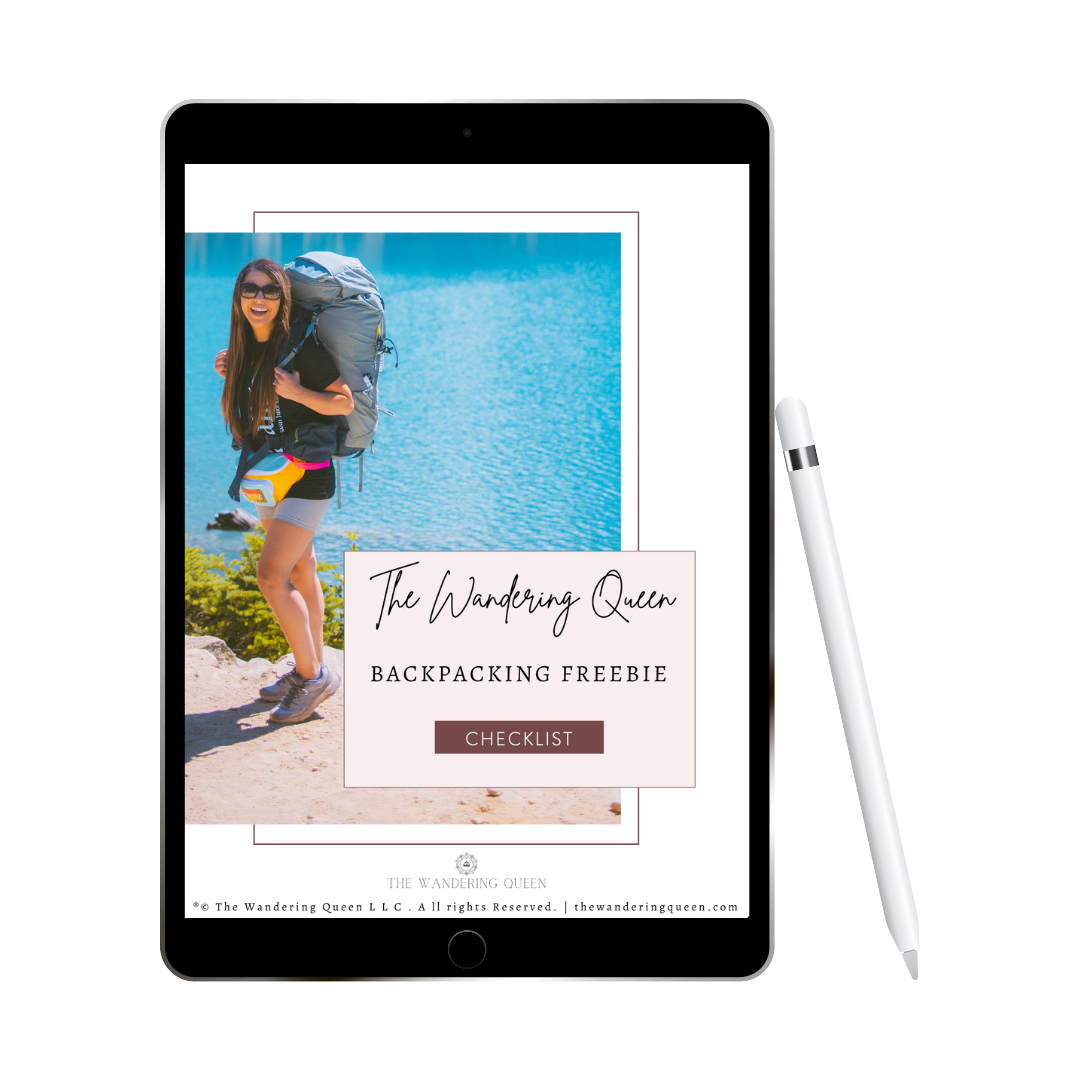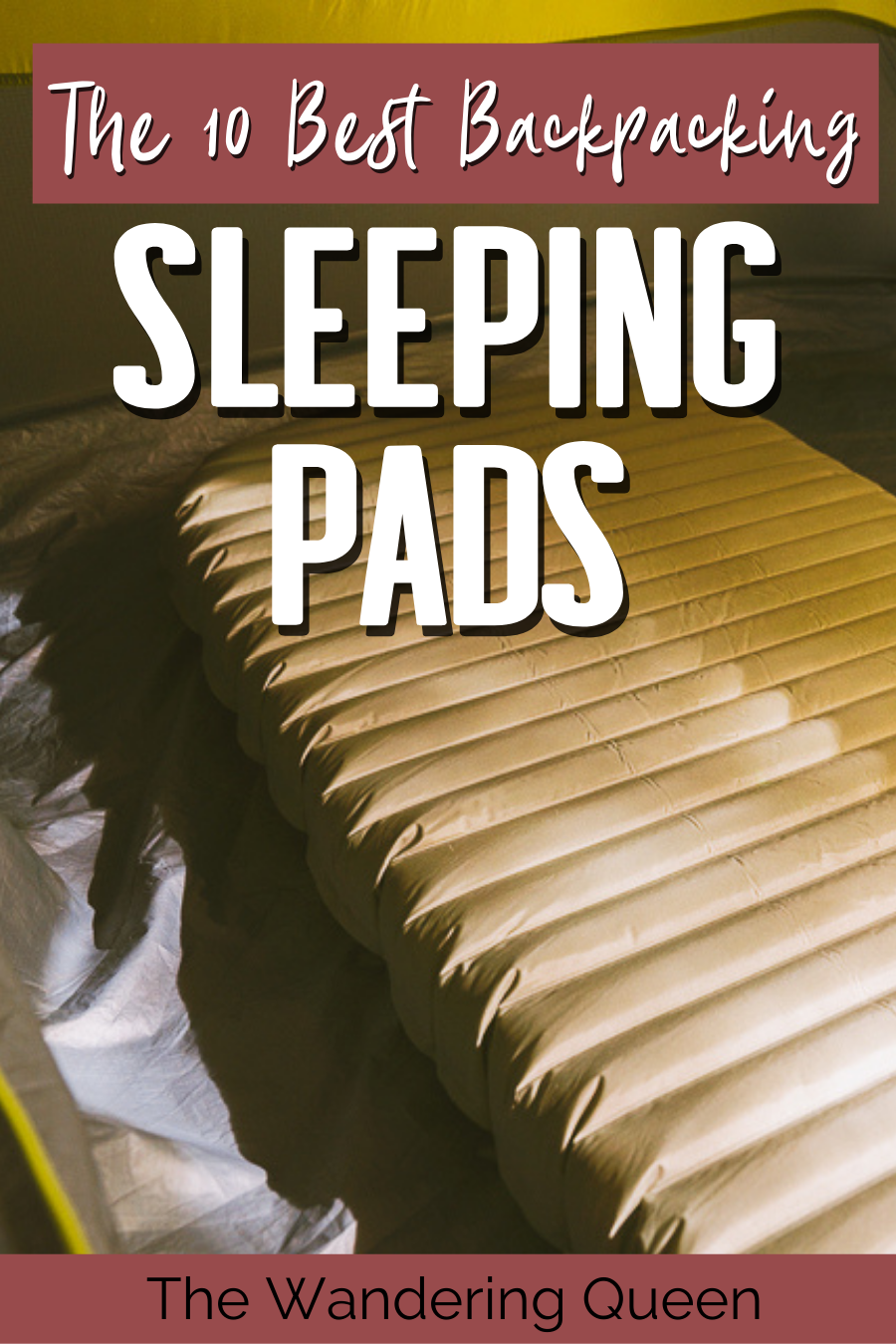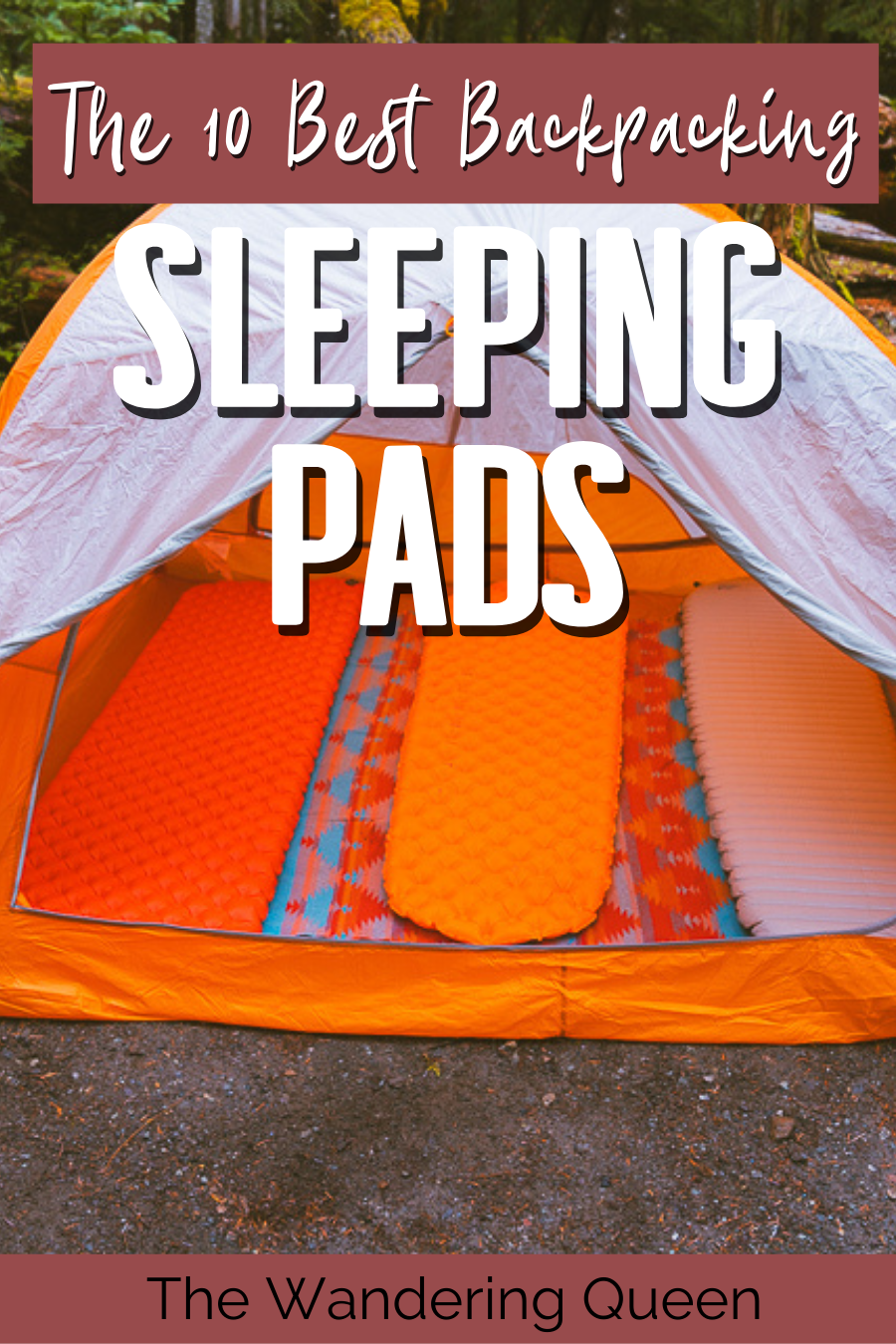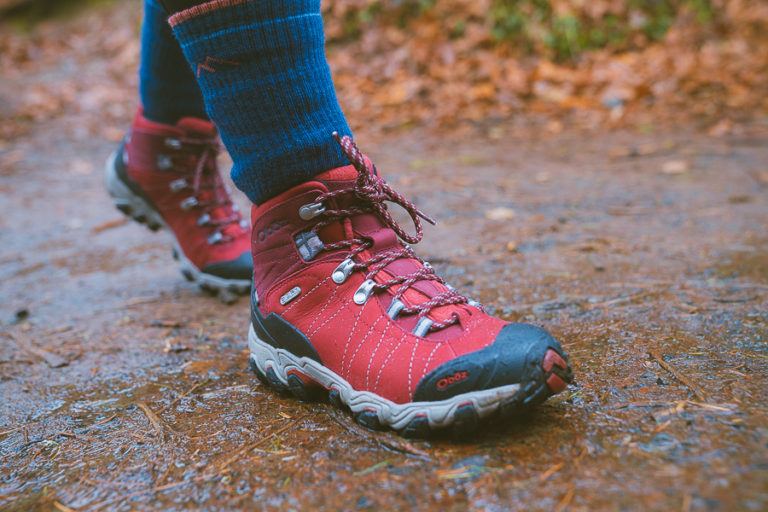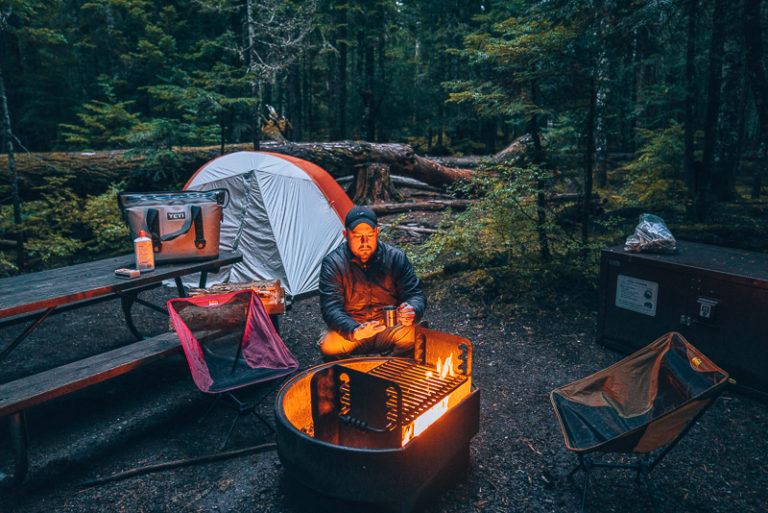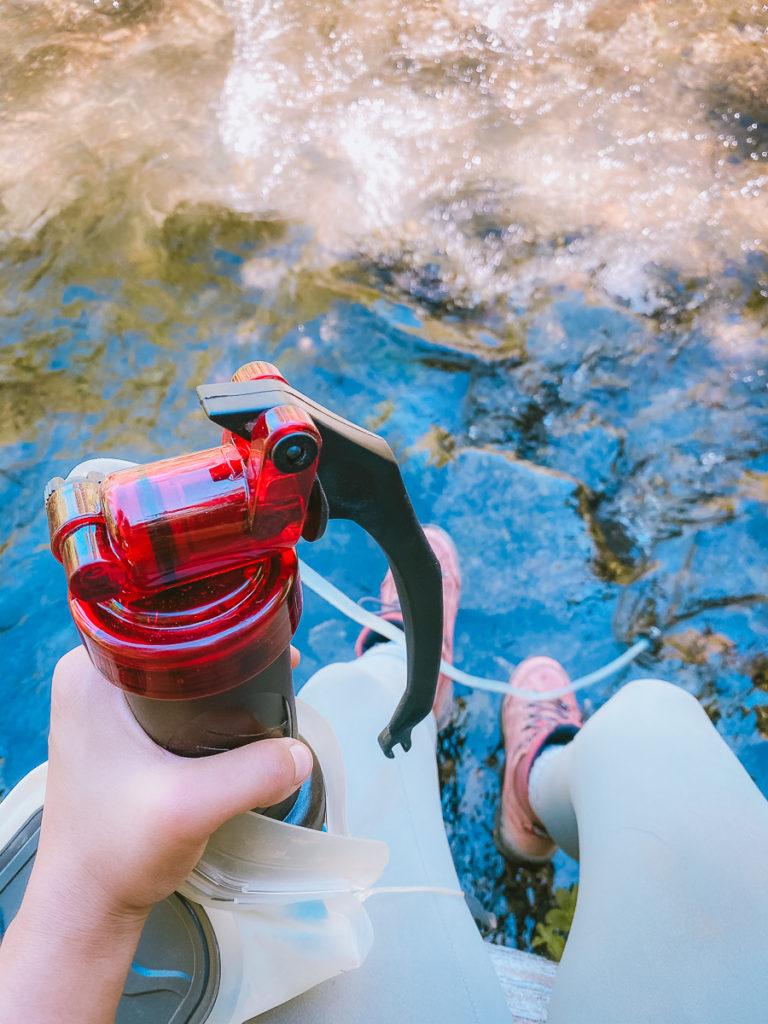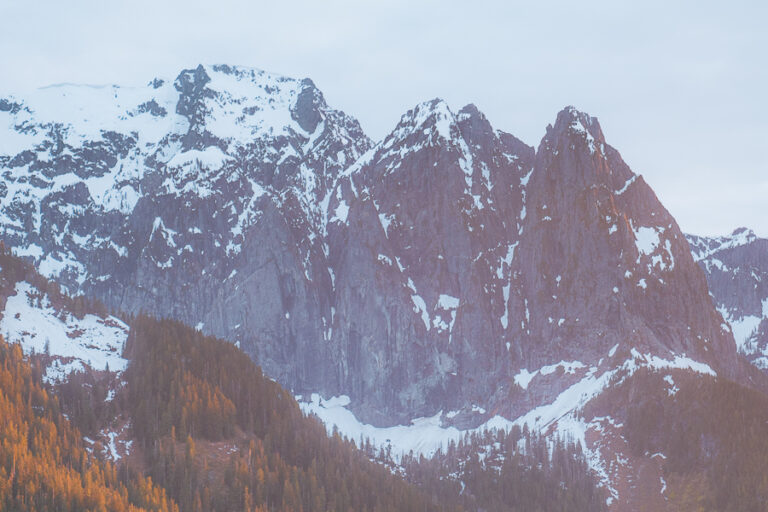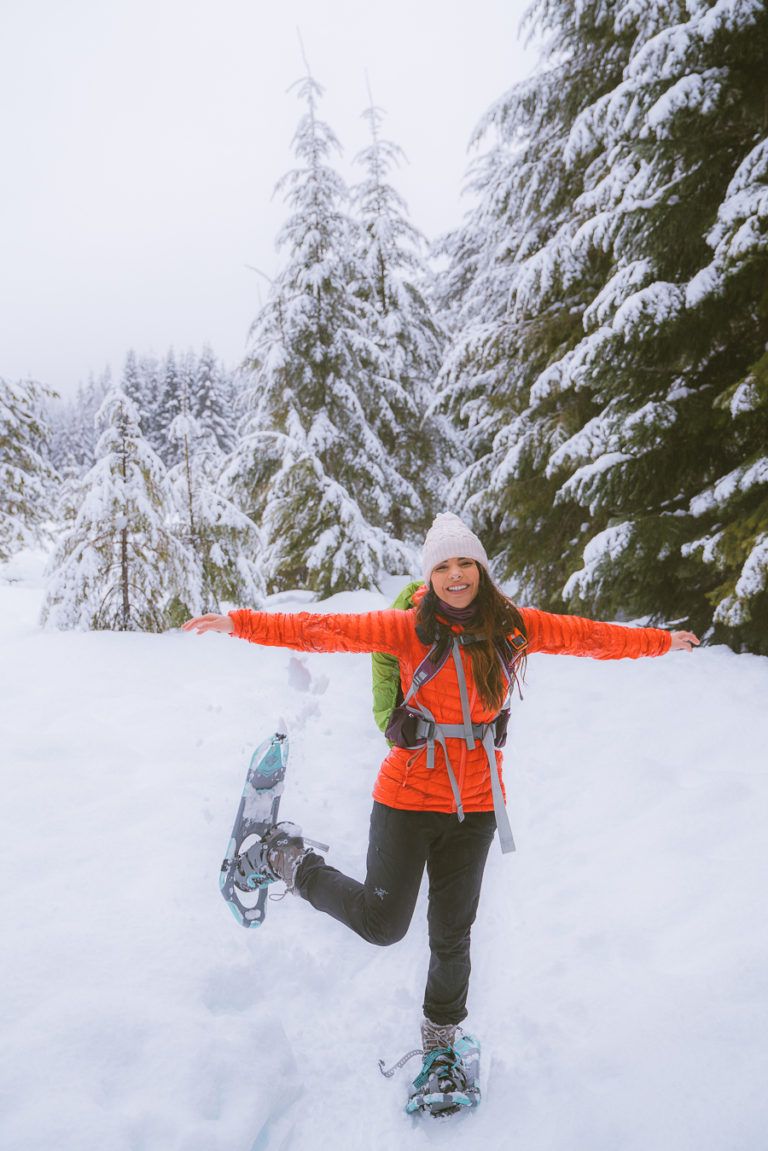The Best Backpacking Sleeping Pad of 2023
Sleeping Pads are one of the most challenging items to buy when it comes to backpacking gear. They can honestly make or break your camping or backpacking trip. If you get the perfect sleeping pad, you can have the best backpacking trip of your life. But, if you pick the wrong sleeping pad, it can ruin your camping experience. I have had tried soooooo many sleeping pads. I tend to buy a different brand every few years for my husband and I. We have bought cheap ones, expensive ones, comfy ones, self-inflatable ones, and even unbearable ones. The sleeping pad is a piece of equipment I tend to spend the most money on because, to me, comfort is a high priority. I made this excellent list by doing a crazy amount of research and trying out most of the pads on the list. This will be my honest review, and I will list the negatives as well as all the positives. One thing I have noticed is there is no perfect sleeping pad. But, I hope with this list you can at least pick one that is close to perfect for your situation. The bonus is you won’t be spending as much money as I did with sleeping pads (I shudder thinking of all the money spent doing so much trial and error). So keep reading on for a thorough guide on the best backpacking sleeping pad of 2022.
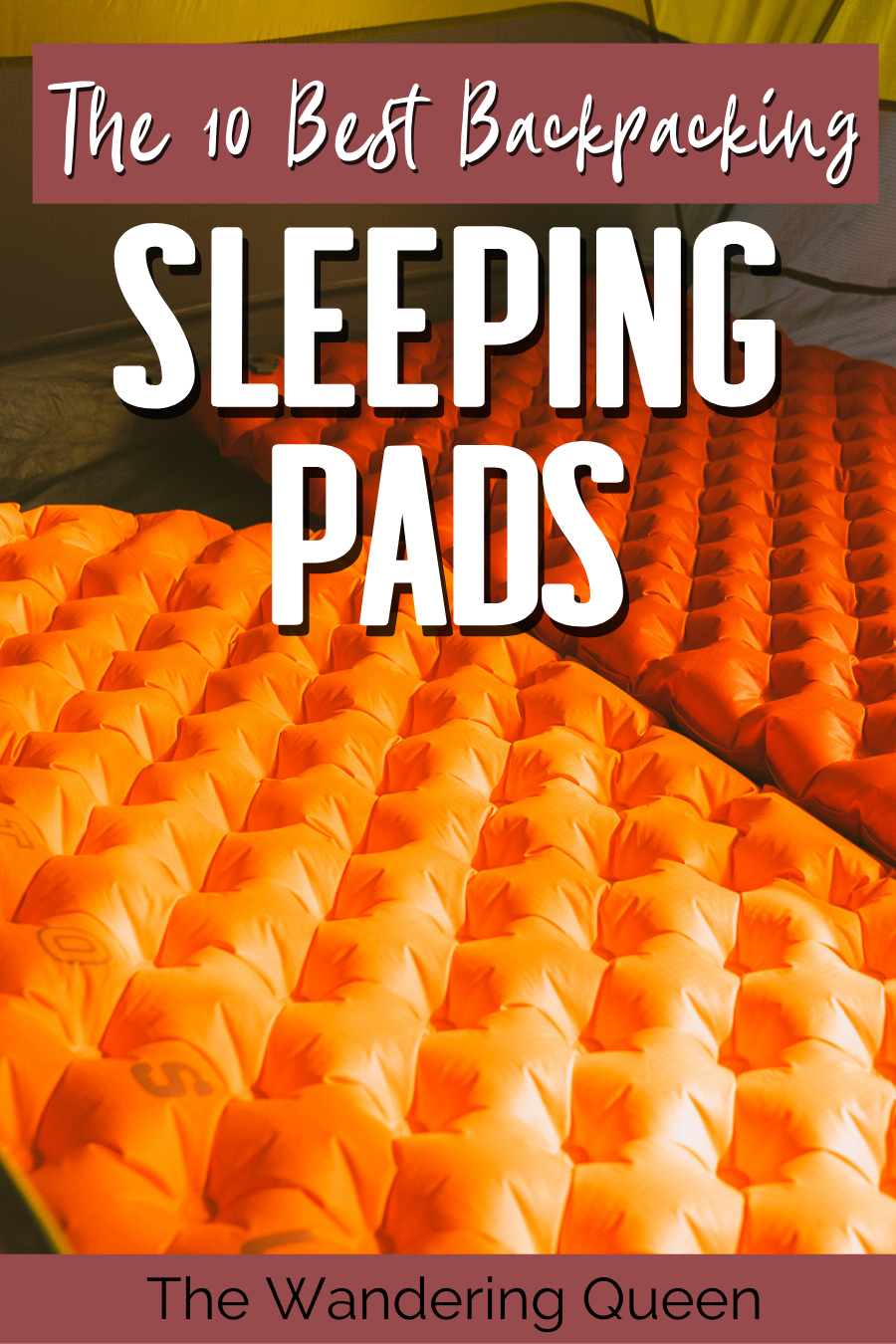
Disclosure: This post contains affiliate links. If you click one of them, I may receive a small commission (for which I am very grateful for) at no extra cost to you.
Download my free Outdoor Photography Guide
Comparison Guide: Best Backpacking Sleeping Pad of 2022

- Pad Type: Air Pad
- Weight: 12 oz
- R Value: 3.2The higher the R-value, the warmer the sleeping pad.
- Packed Size: 9 x 4 inches
- Dimensions: 72 x 20 x 2.5 inches
- Best Use: Backpacking
- Pad Shape: Semirectangular
- Pad Thickness: 2.5 inches
- $$$


- Pad Type: Air Pad
- Weight: 15 oz
- R Value: 5.7The higher the R-value, the warmer the sleeping pad
- Packed Size: 9 x 4 inches
- Dimensions: 72 x 20 x 2.5 inches
- Best Use: Backpacking
- Pad Shape: Semirectangular
- Pad Thickness: 2.5 inches
- $$$$

- Pad Type: Air Pad
- Weight: 16.33 oz
- R Value: 1.3The higher the R-value, the warmer the sleeping pad.
- Packed Size: 8 x 3 inches
- Dimensions: 72 x 23 x 2.5 inches
- Best Use:Camping
- Pad Shape: Rectangular
- Pad Thickness: 2.5 inches
- $$

- Pad Type: Self Inflating
- Weight: 25 oz
- R Value: 5.0The higher the R-value, the warmer the sleeping pad.
- Packed Size: 11 x 6 inches
- Dimensions: 72 x 25 x 1.5 inches
- Best Use: Camping
- Pad Shape: Mummy
- Pad Thickness: 1.5 inches
- $$

- Pad Type: Air Pad
- Weight: 41.6 oz
- R Value: 4.7The higher the R-value, the warmer the sleeping pad.
- Packed Size: 11 x 5.5 inches
- Dimensions: 73 x 25 x 3 inches
- Best Use: Camping
- Pad Shape: Rectangular
- Pad Thickness: 3 inches
- $$$$

- Pad Type: Foam Pad
- Weight: 10.5 oz
- R Value: UnavailableThe higher the R-value, the warmer the sleeping pad.
- Packed Size: 20 x 5.5 x 5 inches
- Dimensions: 72 x 20 x 0.9 inches
- Best Use: Backpacking
- Pad Shape: Rectangular
- Pad Thickness: 0.9 inches
- $

- Pad Type: Air Pad
- Weight: 11.9 oz
- R Value: UnavailableThe higher the R-value, the warmer the sleeping pad
- Packed Size: 6.5 x 3 inches
- Dimensions: 72 x 20 x 3.75 inches
- Best Use: Backpacking
- Pad Shape: Rectangular
- Pad Thickness: 3.75 inches
- $$$

- Pad Type: Foam Pad
- Weight: 14 oz
- R Value: 2.6The higher the R-value, the warmer the sleeping pad.
- Packed Size: 20 x 5.5 x 5 inches
- Dimensions: 72 x 20 x 0.75 inches
- Best Use: Backpacking
- Pad Shape: Rectangular
- Pad Thickness: 0.75 inches
- $

- Pad Type: Air Pad
- Weight: 16.9 oz
- R Value: 3.3The higher the R-value, the warmer the sleeping pad.
- Packed Size: 9 x 4 inches
- Dimensions: 72 x 21.5 x 2 inches
- Best Use: Backpacking
- Pad Shape: Mummy
- Pad Thickness: 2 inches
- $$$

- Pad Type: Self-Inflating Pad
- Weight: 31 oz
- R Value: 4.1The higher the R-value, the warmer the sleeping pad.
- Packed Size: 11.25 x 7 inches
- Dimensions: 72 x 20 x 3 inches
- Best Use: Camping
- Pad Shape: Semirectangular
- Pad Thickness: 3 inches
- $$$
Best Sleeping Pads Reviews
Therm-a-Rest NeoAir XLite Sleeping Pad
This Thermarest sleeping pad is the best ultralight sleeping pad in the market. It is perfect for long summer backpacking trip where weight is critical. For its weight, the pad is pretty comfortable and doesn’t seem to give into your weight at night. But, the most common complaint on the comfort factor is the width of the pad. The pad does not provide much room to spread out your arms, so you have to sleep with your arms on your belly. The narrow mummy construction doesn’t provide ample surface area to move around on.
Do note, the pad is only a three season sleeping pad and is not recommended to use in the winter. Many people add a foam pad like the Therm-A-Rest Z Lite Sol underneath to use the XLite pad in the winter.
There has also been many reports on how noisy the sleeping pad is, but apparently Thermarest has improved the noise level over the years.
Cons
- Very expensive
- Can not be used in the winter
- Very narrow so you might have to sleep with hands on belly
- Is known to be noisy
- Isn't the best car camping pad
Pros
- Super lightweight
- A lot of Cushion for its weight
- The best backpacking pad in the market for the summer months
Therm-a-Rest NeoAir XTherm Sleeping Pad
The best sleeping pad on the market is this one right here, the Thermarest Neoair XTherm. My husband had this sleeping pad a few years ago, and we loved how lightweight it was. I picked it as the best sleeping pad for backpacking because it can be used ALL year round (yes it is an excellent winter sleeping pad) and it is super light coming in at 15 oz!
I will say that we don’t have this pad anymore because our dog punctured it :-/. Our dog JJ is the biggest fan of the outdoors so much that he gets a little too excited. It isn’t the most durable sleeping pad so, try not to place it on top of sharp objects and keep it away from overly excited animals.
I wouldn’t recommend using this as a car camping sleeping pad. It is a bit narrow, and many other sleeping pads are a lot more comfortable.
Cons
- Very expensive
- Isn't the best car camping pad.
- Very narrow so you might have to sleep with hands on belly
- Is known to be noisy
Pros
- Can be used in all seasons
- A lot of Cushion for its weight
- Best Cold Weather Sleeping Pad
- Highest R value sleeping pad on this list
Klymit Static V2 Sleeping Pad
If you are looking for the best value inflatable camping pad, this is it right here. The Klymit Static pad is a relatively cheap pad with many positive attributes. The pad is lightweight, comfortable, durable, and compact. It is a great sleeping pad for beginner campers/backpackers. The longer width is also pretty nice because it can be pretty easy to fall off your pad. Especially for people that move a lot in their sleep.
The main negative is that inflating it can be a pain, you can also bottom out due to its weird shape, and I wouldn’t recommend using it in the winter. The R-value(resist of heat flow) is pretty low, but you can always improve it by adding a thick foam sleeping pad underneath it.
Cons
- Very Low R Value
- Inflating Can Be Annoying
- Lacks lateral rigidity
- You Can Bottom Out
Pros
- Relatively cheap for a backpacking pad
- Comfortable
- Durable
- Compact
- Great all around pad for car camping and summer backpacking
REI Co-op AirRail Plus Self-Inflating Sleeping Pad
This REI AirRail was my first splurge on a quality air sleeping pad. This pad is a perfect beginner sleeping pad as the price isn’t too steep as the other backpacking sleeping pads I have listed. It is also known to be the most comfortable self inflating camping pad out there. Many people love the smooth surface and the rails to keep you from rolling off the pad.
A couple of negative attributes are that it is too bulky, and it is too heavy to use for backpacking. But if you are a beginner and not wanting to spend a ton of money, it is a great starter pad. Eventually, after using my pad for five years, it did get a hole in it, but I felt like it was right timing as I was ready to upgrade my backpacking sleeping pad.
Cons
- Bulky
- Heavy for a backpacking pad
Pros
- Cheap sleeping pad
- Warm
- Comfortable and smooth surface
- Best self inflating sleeping pad
- Durable
Sea to Summit Comfort Plus XT Insulated Sleeping Pad
One of the pickiest sleepers in the world is my husband. I have dragged my poor husband through many restless camping and backpacking nights. Sleeping when he is uncomfortable, isn’t an option for him. As you may know, camping isn’t known to be the most comfortable way to sleep. We luckily found this camping sleeping pad a few years ago, and we have loved it! I no longer have a grumpy husband during our trips, and he gets a great nights rest. In our opinion, this is the best camping sleeping pad we have found.
It is also the best sleeping pad for side sleepers (which is how Jameson sleeps). He finally found a pad that won’t hurt his shoulders while he is sleeping. The comfort plus is a double sleeping pad! So that means you have to inflate both sides of the pad, so it probably takes more time to inflate, but we don’t mind.
The main negatives to the thick sleeping pad are the price tag and the weight. It is the heaviest sleeping pad I have listed, and it is pretty pricey. But if you love to be comfortable and want one of the best sleeping mats for camping, then buy this comfy pad!
Cons
- Expensive
- Very heavy
Pros
- It is a double camping pad. So if you get a hole, you still have a backup.
- Comfiest camping air pad
- Durable
- Two valves (inflation/delation)
- Warm
NEMO Switchback Sleeping Pad
When it comes to camping, the Nemo is one of the best thick foam camping pads on the market. It is the direct competitor of the foam Thermarest camping pad: The Z lite Sol. If you want to save some money, this is your best bet. It is a very comfortable closed cell foam sleeping pad.
Although it is not as comfortable as an air pad, there is still value in purchasing camping foam pad. In the winter you can add it beneath your air camping pad to add some warmth or even to add more comfort.
Cons
- It is a Foam camping mat, so not as comfortable as an air pad
- Packed size is big
- Isn't that warm
Pros
- Very Cheap
- Very light
- Great to use underneath an airpad
Big Agnes Insulated AXL Air
One of the best sleeping pad for big guys is the Big Agnes Insulated sleeping pad. The pad’s thickness comes in at a whopping 3.75 inches thick, making it one of the comfiest pad on the list. It is a great sleeping pad for side sleepers and has a wide sleeping pad thanks to its rectangular shape. If comfort and weight are key for you, then you NEED this sleeping pad. It is pretty light at 11.9 ounces.
The main negatives are that it can only be used in warmer months, it isn’t durable, and it is pretty expensive. But, if you are backpacking during the summer months and comfort is important to you, the splurge can be justified.
Cons
- Three season pad
- Not as durable
- Can feel too bouncy
- Expensive
Pros
- Super lightweight
- Very comfortable
- Retangular shape so it isn't narrow
Therm-A-Rest Z Lite Sol
This closed cell sleeping pad was known to be the best foam sleeping pad for years! Recently the NEMO Switchback has been giving it a run for its money, but a few years ago that crown was solely for the Thermarest Z Lite Sol. It is cheap, light and durable, perfect for a beginner backpacker. You can even add the pad underneath any air pad for added comfort.
Like all closed cell foam pads, it isn’t comfortable compared to air pads, and they aren’t packable. But, if you are looking for something cheap, then this can be the perfect pad for you.
Cons
- It is a Foam camping mat, so not as comfortable as an air pad
- Packed size is big
- Isn't that warm
Pros
- Very Cheap
- Very light
- Great to use underneath an airpad
- Durable
Sea to Summit UltraLight Insulated Sleeping Pad
Currently, I am using this inflatable sleeping pad on all my camping and backpacking trips. It is Sea to Summit’s newest sleeping pad, so there isn’t much information on it. I was interested in this pad because I loved my husband’s Sea to Summit Comfort Plus Insulated Sleeping Pad.
So far, I am pleased with how lightweight, comfortable, and easy it is to inflate and deflate. What I don’t like is how delicate it seems. It feels as if I am inflating a balloon that can easily pop. I have been pretty careful, and I am NOT bringing it with me on trips with my dogs (JJ I am looking at you!), but so far the price for this sleeping pad seems pretty fair.
Cons
- Three season pad
- Not as durable
- Bottoms out easier
Pros
- Lightweight
- Very comfortable
Sea to Summit Comfort Plus SI Sleeping Pad
This self inflating pad is a warm, comfortable camping sleeping pad. The R-value is incredible, so it is perfect for the winter months. It is very comfortable due to the 3 inches of thickness, and the flat surface can be a favorite for some people. My biggest concern is the weight and bulkiness. If you are primarily car camping all year-round, then this is one of the best camping pads for you. But if you are doing more extended backpacking trips, then this is not the pad for you.
Cons
- Bulky
- Heavy
- Expensive
- Hard to pack in stuff sack
Pros
- Easily Inflated
- Comfortable
- Durable
- Warm
Important Information About Sleeping Pads
Foam Sleeping Pad
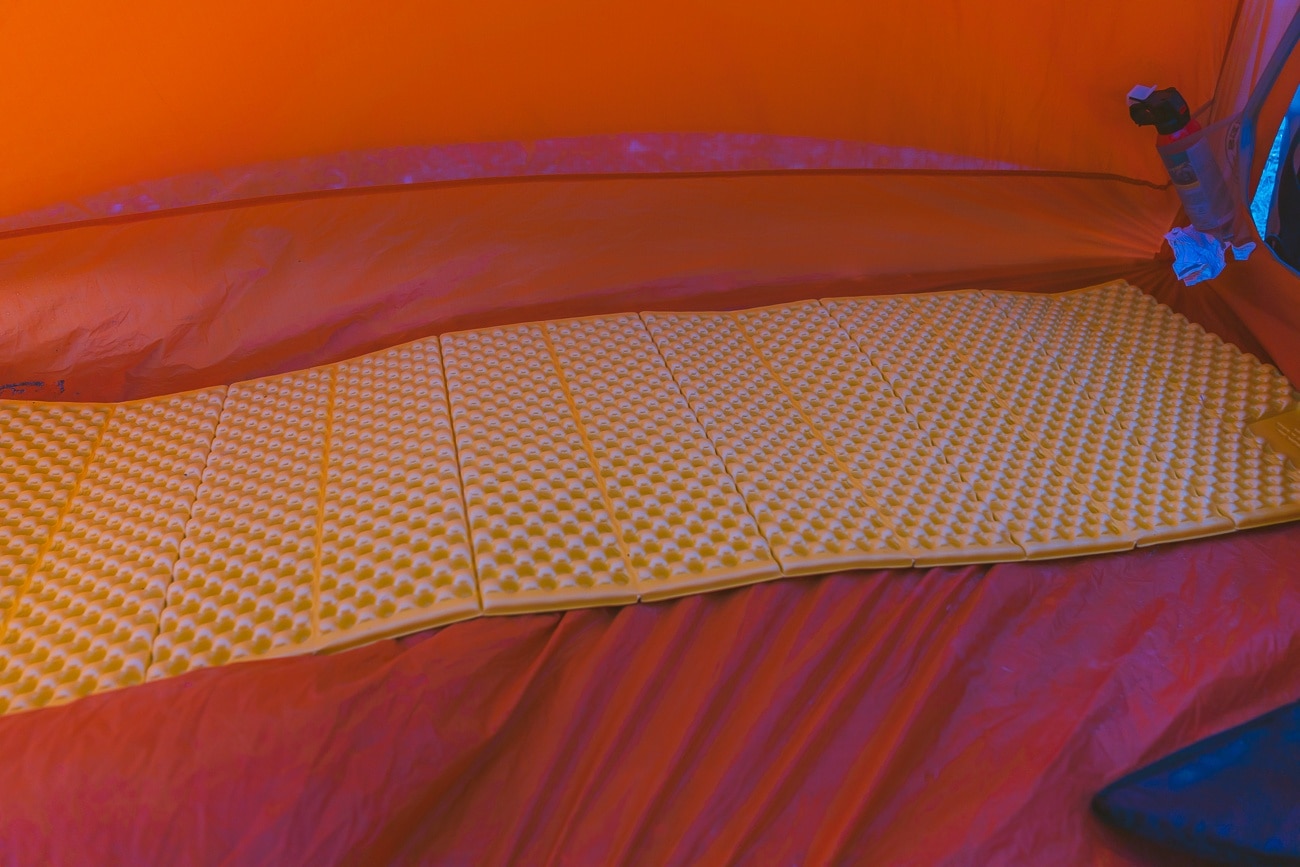
These sleeping pads are foam filled with tiny closed air cells. They tend to be cheaper, lightweight and durable, so you don’t have to worry about puncturing it. Foam sleep pads tend to be used by beginner campers and backpackers who prefer not to invest in an expensive sleeping pad just yet.
Foam pads are not very comfortable and are not very packable. They fold up in a z formation so they can be challenging to pack inside a backpack. Most people usually pack the pads outside their bags.
Air Pads
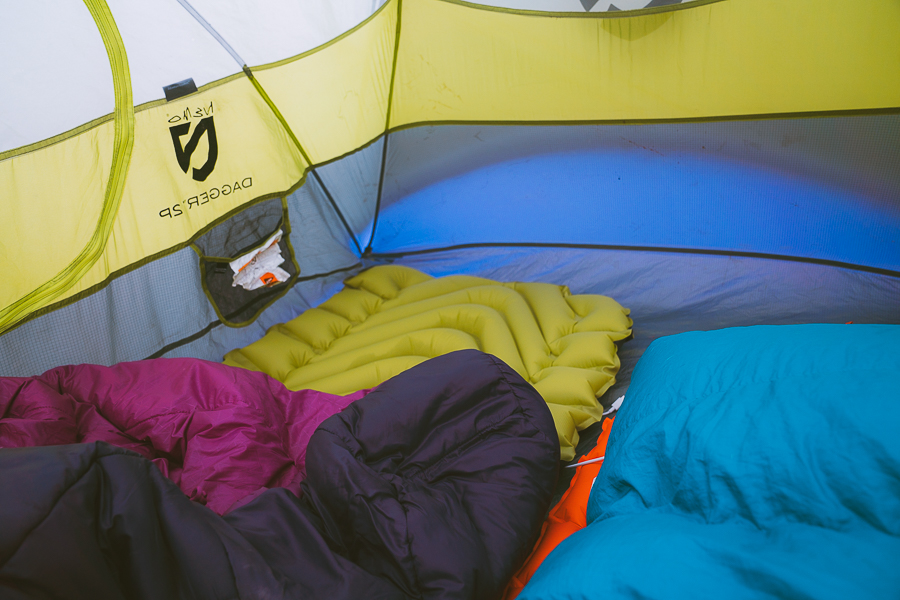
The best pads for backpacking are by far the Air pads. They are typically very comfortable and lightweight. Many of the newer pads now have insulation or reflective materials to increase the R-value (warmth). These types of pads are more difficult to inflate compared to the self inflating sleeping pads, but some models come with a hand pump.
Since the air pads are compact and ultralight, they tend to be more expensive than the foam pads and self inflating pads. However, pads such as the Klymit Static V2 Sleeping Pad can be reasonably priced. Durability can be an issue as many of them are delicate and can be punctured/destroyed by sharp objects.
Self Inflating Sleeping Pad
The self inflating mats bring in a combination of the open-cell foam insulation and air pads. They are usually comfortable, super durable, and incredibly warm. Their insulation is top notch, making it perfect for year-round, long trips. The best part is that all you need to do is to open the valve and the sleeping pad automatically fills with air. Because of the convenience, ease, and durability, self inflating pads are considered to be the best camping sleeping pads.
All the added comfort and ease, does come with some sacrifices. The sleeping pads can be bulky and heavy, making it hard to bring on extended backpacking trips. The pads can also prove to be difficult to pack into stuff sacks at times. My husband can attest to this as he had to repack my REI Air Rail Pad for me many times.
Insulation and R Value Sleeping Pad
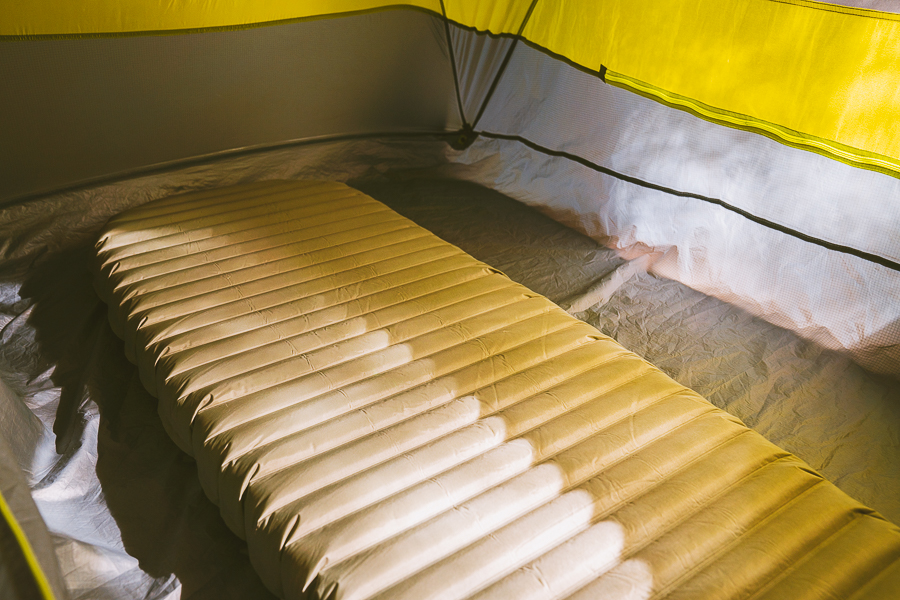
Insulation is a critical component to know when evaluating which pad to buy. You lose a tremendous amount of body heat when you sleep on the ground so having some insulation is key to sleeping comfortably. Always try to look out for sleeping pads that have some insulation.
The R-value measures how much a sleeping pad can Resist the heat flow. The higher the R, the warmer the sleeping pad. Since women tend to be campers who sleep cold, it is essential to buy a sleeping pad with a good R-value (Like a 4 and above).
Packed Size
Air pads are usually the most packable sleeping pads. As you can see in the comparison table above, some of the pads pack down to as small as 9″X 4″! The self inflatable and the foam pads tend to be bulky and hard to pack. Most backpackers pack their foam pads outside their backpacks. If packing is limited, consider buying an air pad.
Shape
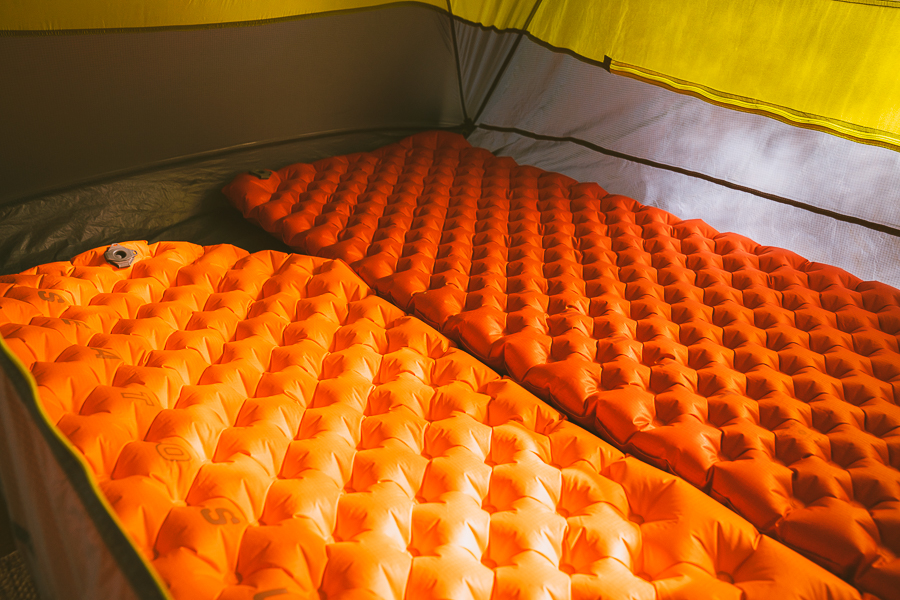
The most efficient sleeping pad for backpacking is the mummy sleeping pad. This sleeping pad shape weighs less than the rectangular shape due to cutting off the unused bottom sections where your feet go. Some people can live with this while others that usually like to spread out their feet can have trouble sleeping.
Noise
One of the biggest complaints of air pads is how noisy they are. Most air pads tend to make a crinkly sound similar to a bag of chips. It can be super annoying especially for light sleepers. My best advice is to wait it out. Usually, the air pad tends to be less noisy after it is “broken in”. If the noise level does not decrease, you can typically return the pad within a year from purchase, if you bought it from REI.
Price
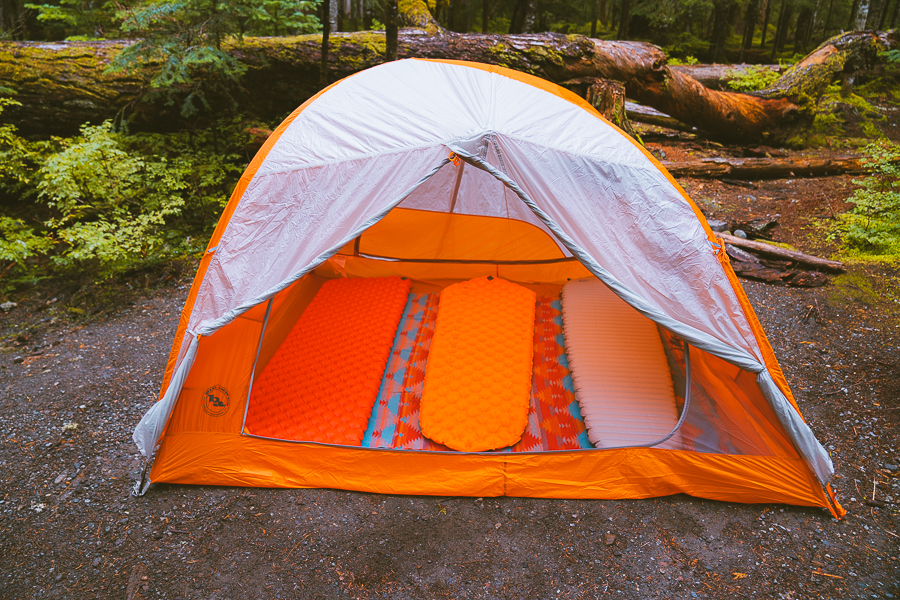
Prices for sleeping pads range from $50 to $200. On one of my first backpacking trips, I spent $50 on an inflatable sleeping pad not mentioned on this list. Let me say, it was probably one of the biggest camping mistakes I have ever made! The pad took up most of the room in my backpack, and it was super heavy. I ended up throwing it away right after the trip, and I bought the REI Air Rail which is around $100.
In the end, I ended up spending a lot more trying to go the cheap route. I spent a total of $150 within a year (which is more then I wanted to spend on a pad). If you know that you will be camping or backpacking more then once a year, it is usually cheaper to invest in a more expensive pad. Trust me, or should I say trust my back, that absolutely hated me during the trip.
Valve Types: Self Inflating and Air Pads
There are two types of valves out in the market, the round valve and the flat valve. My favorite is the flat valve, and I would honestly try to avoid buying a pad with a round valve. Here is why:
- Round Valve
- Inefficient: Open while inflating
- Slow to deflate and sometimes to inflate
- Can be damaged easily
- Heavy
- Flat Valve
- Slim profile, so harder to damage
- Two valves, one to inflate, one to deflate
- Faster to inflate and deflate
- Traps in air while inflating, so it is very efficient
- Lightweight
Caring For Your Sleeping Mat or Pad
Caring for your sleeping pad is pretty easy. The main things to watch out for are sharp objects, crazy hyper dogs (oh JJ), and insect repellent. Insect repellent is not good for sleeping pads in the long term as the chemicals in the repellent deteriorate the sleeping pad. You can read more about taking care of your sleeping pad per an REI expert here.
Final Thoughts On Best Sleeping Pads For Backpacking
Hope you enjoyed this list of best backpacking sleeping pads and don’t forget to read some of my other awesome camping guides:
- The Best Hiking and Backpacking Packs For Women
- 15 Best Gift Ideas For An Outdoor Enthusiast
- Best Sleeping Bags For Women
- 17 Tips On Backpacking For Beginners
- Backpacking Essentials for Beginners
- The Best Backpacking Water Filters

Join my Newsletter to receive my free Backpacking Checklist!
Subscribe to have posts delivered straight to your inbox!! PLUS, get my FREE backpacking checklist!


